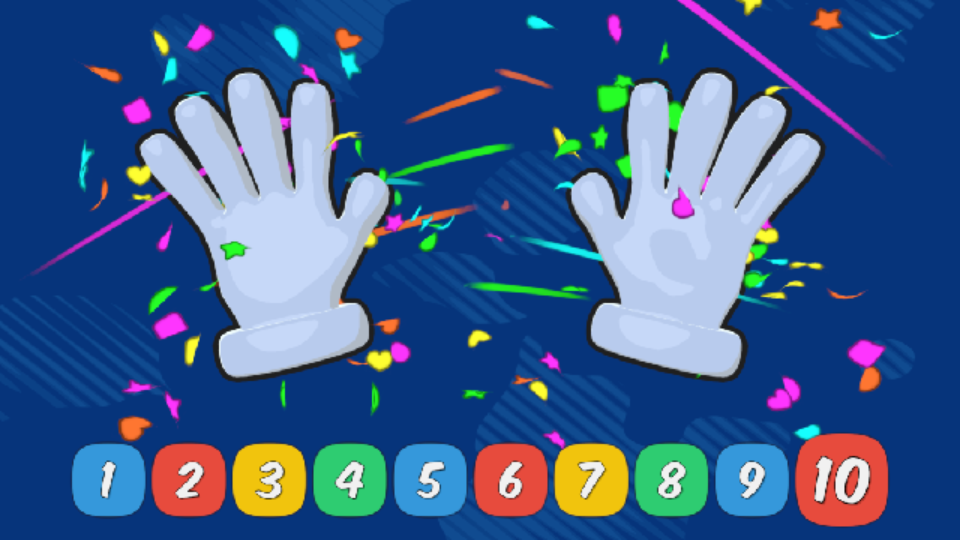
Why Count To Ten Works
education
I Can Count To Ten is an easy-to-use app to help children learn to count to ten using their fingers.
Historically among different cultures, humans have been relying on fingers or body parts to support their representation of numbers (Ifrah, 1994). And in occidental cultures, counting on fingers is one of the first strategies taught to children. They link the verbal representation of a number with its numerical meaning (Gelman and Gallistel, 1978; Gallistel and Gelman, 1992; Butterworth, 1999; Sato and Lalain, 2008).
The app uses sounds, color, and animation to keep the attention of young children. Children are encouraged to follow along with the events on-screen. Cartoon hands are immediately recognizable by most children, so they feel comfortable. Repeating animations show the progression of extended fingers from one to ten. A playful voice speaks each number aloud as each finger moves. In the end, confetti 🎉 goes everywhere, keeping the user engaged.
The child can interact with the app by tapping the numbers or swiping through the animations. If there is no interaction from the user, the hands will automatically count up to ten. The 3D hands are modeled after common cartoon characters. This design was important as it kept children engaged more than realistic hands. The playful animations mimic those of a TV cartoon while demonstrating how to count.
Count To Ten features sound by other children to keep the user’s attention. Children are naturally drawn to higher-pitched voices, especially other children. The sound of other kids cheering 🎊 at the end of the lesson makes the child feel happy and encouraged.
The simple UI is designed for young children. There are no menus, settings, or extra features. This prevents the user from accidentally clicking anything that they don’t need. The number buttons at the bottom let users pick any number they want to view, without needing to count in order.
The idea of numbers can be introduced to children as young as 12 months. Young children typically count small sets of items like cookies 🍪, steps 🚶, and buttons. This app is most beneficial to children in the pre-operational stage of human development. This stage is approximately between the ages of two and seven years old. It is at this stage that children begin to understand, represent, remember, and picture objects in their minds without having it in front of them. It is also during this stage that they want to understand everything and begin to propose the questions of “why?” and “how come?” (Santrock, 2014).
References 📚
Butterworth, B. (1999). What Counts: How the Brain is Hardwired for Math. New York, NY: The Free Press.
Gallistel, C., & Gelman, R. (1992, Aug). Review Preverbal and verbal counting and computation. Cognition, pp. 44(1-2):43-74.
Gelman, R., & Gallistel, C. R. (1978). The Child’s Understanding of Number. Cambridge, MA: Harvard University press.
Ifrah, G. (1994). Histoire des chiffres, 2nd Edn. Paris: Robert Laffont.
Nevid, J. S. (2017). Essentials of Psychology: Concepts and Applications. Cengage Learning; 5 edition.
Santrock, J. W. (2004). LifeSpan Development (9th Ed.). Boston, MA: McGraw-Hill College.
Sato, M., & Lalain, M. (2008, Apr). On the relationship between handedness and hand-digit mapping in finger counting. Cortex, pp. 44(4):393-9.